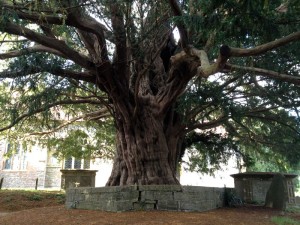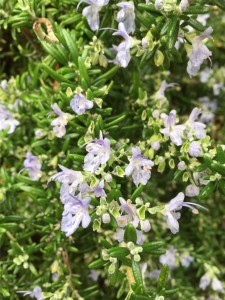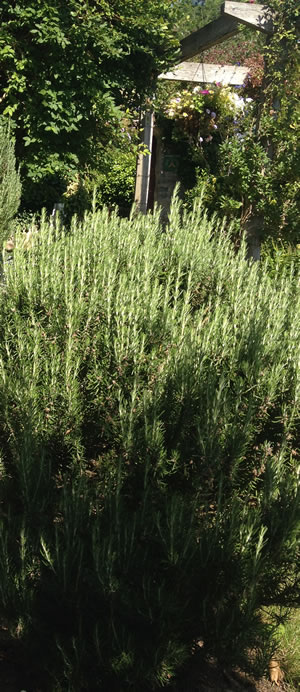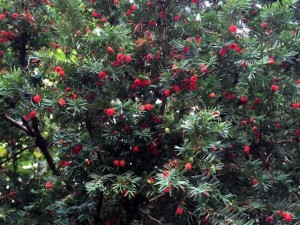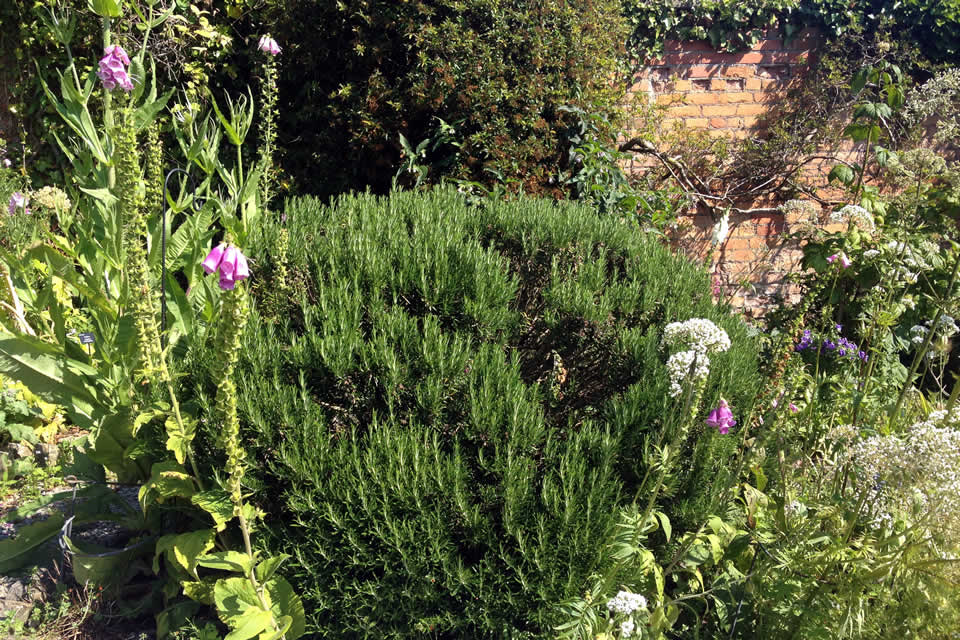Rosemary and Yew
There’s rosemary, that’s for remembrance. Pray you, love, remember!
Hamlet (Act 4, Scene 5), William Shakespeare

Rosemary at Chalice Well Garden
Rosemary (rosemarinus officinalis) has been used to increase memory at least since the time of the ancient Greeks when students would wear garlands of the herb to improve their memories. For this and other reasons, rosemary came to be known as ‘Herb of Crowns’.
Its name comes from the Latin rosmaris, meaning “dew of the sea”, and the herb is native to the dry, rocky areas of the Mediterranean coast.
Because of its association with memory, rosemary has historically been associated with weddings and death. A bride in the middle ages would wear a rosemary headdress and the groom and guests a sprig of the herb. From this association rosemary also evolved into a love charm, with the bride’s wreath symbolising fidelity, love, abiding friendship, loyalty and remembrance of the life the woman had led before her marriage. Couples would also plant a branch of rosemary on their wedding day.
Another practice of the middle ages, also known as far back as Roman times, was to lay branches of rosemary on the coffin at funerals. A sprig of the herb was also often placed in the hands of the deceased at the funeral, again as a symbol of remembrance.
![]()
The yew tree has been associated with reincarnation and eternal life since time immemorial, probably because it appears to be immortal, able to live for well over a thousand years with many surviving much longer: some are thought to pre-date Christ. The Fortingall Yew in Perthshire, for example, is said to be over 5,000 years old (a sapling from the latter is now in the grounds of the Abbey Retreat House in Glastonbury).

The Fortingall Yew
Yew (taxus baccata) grows in a particular way, with shoots or branches rooting and growing into new trunks, which then join the main truck, hence the tree’s huge, fluted girth. Once the main trunk has formed, which takes about 150 years, the yew continues its growth horizontally, well into old age when the trunk often becomes completely hollow. A well-deserved reputation for immortality, then, and it is not surprising that yew has become a symbol of life after death.
Some people use it to enhance magical and psychic abilities and to induce visions, considering it a potent tree, with the ability to bring dreams, connect to ancestors and take otherworld journeys. Don’t try this at home! All parts of the tree are poisonous except the fleshy part of the berry. In recent years, however, a breakthrough in research has indicated that taxol, a chemical found in the bark of the tree, inhibits cell growth and division, offering some prospects for the treatment of cancer.
In Europe, yew wood has been widely used for making bows, and in Ireland also for dagger handles and wine barrels. No-one is quite sure how yew became associated with graveyards: some say that this is because they were usually fenced and so the poisonous tree could safely be grown for its wood without livestock being poisoned. Others that Christian missionaries preached under and erected their churches close to the trees because of an ancient, pagan association of yew trees with the sacred; certainly druidic rites also held sacred groves and avenues of yew. Some of the most ancient churchyard yews must clearly have been there long before the churches were built.
While it is clear that the sacred yew pre-dates Christianity, the trees in churchyards were thought to protect the spirits of the dead, while the ancient custom of putting sprigs of yew into the shrouds and graves of the departed indicated a belief that death was not, in fact, the end of life, but merely a passing through into the continuance of life to come.
